Goulandris Museum of Contemporary Art
During our ten weeks in Greece, we had visited seven archaeological sites and five archaeological museums. I was feeling overwhelmed by ancient artifacts. So on our last day in Athens, I decided it was time a dose of modern and contemporary art.
Basil Goulandris was a Greek shipowner who lived in New York City, Paris, and Lausanne, Switzerland. He and his wife Elise amassed an art collection valued at $3 billion, and built the Museum of Contemporary Art in Basil’s home town of Andros, Greece. They made plans to build a museum in Athens to bring their art to a wider audience. Unfortunately, neither Basil nor Elise lived to see the Museum of the Basil & Elise Goulandris Foundation open in 2019.
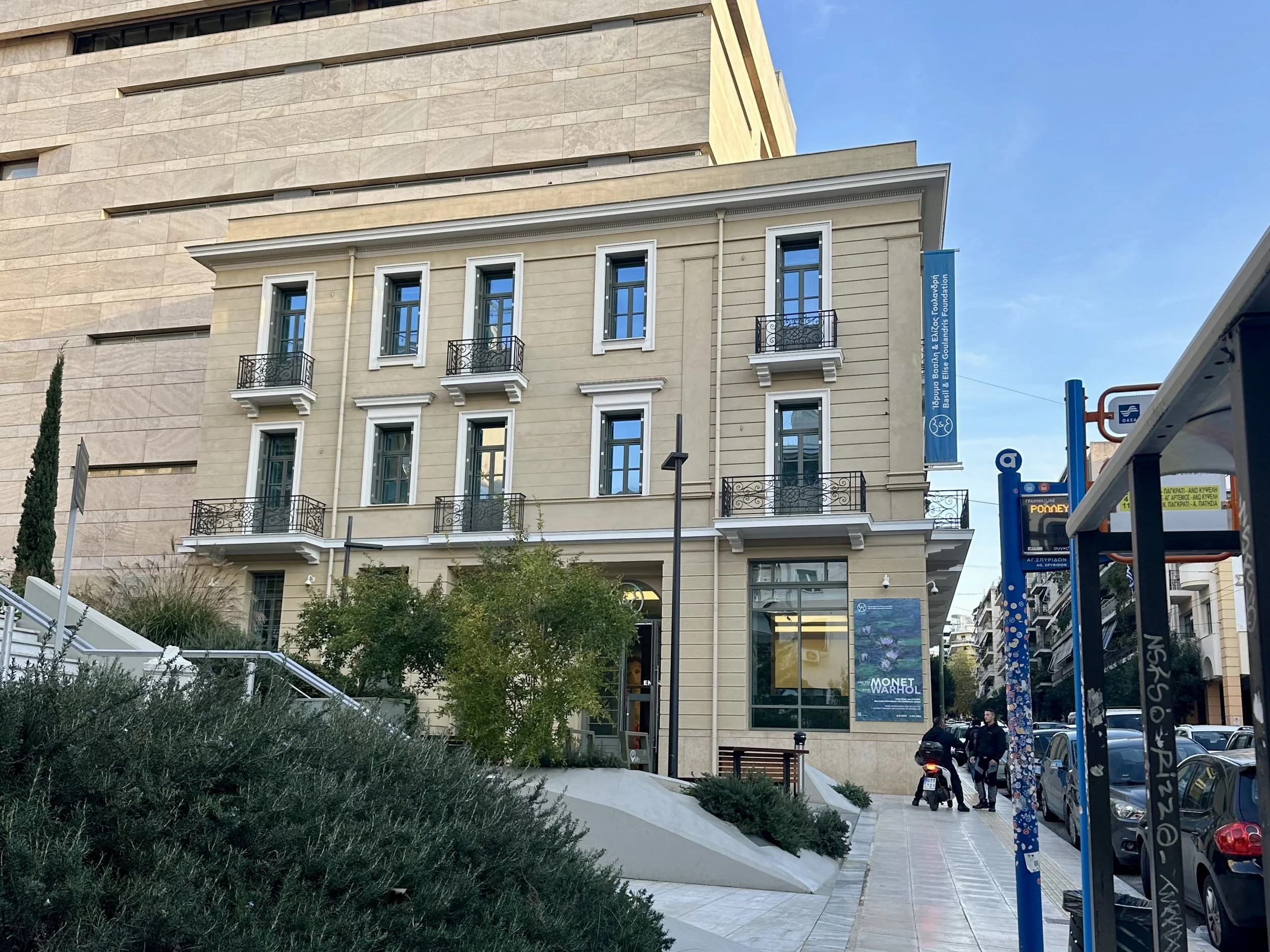


We were interested in seeing the work of Greek artists, so we started at the top and worked our way down. My favorite works on the 4th and 3rd floors included:
Erotic (1977) by noted Greek modernist Yannis Moranis. It was abstract, yet sexual, both reminiscent of and vastly different from classical sculpture.
The Labors of Hercules (1989), a diptych by Pavlos Samios. I had just listened to the story of Hercules in Stephen Frye’s Heroes. These would have made wonderful illustrations for that book. I liked Samios’ simplicity and use of color.
The Little Tree (1976) by the single-named artist Pavlos. Pavlos used paper confetti to create a tree. It was like viewing a pointillist painting: stand close, and it’s a haphazard pile of colored rectangles; move back, and it becomes a tree (or maybe a swarm of flying insects). I looked up Pavlos and was very impressed with his later work, which was like three-dimensional quilling with giant paper strips. I’ll definitely look for more of his art in the future.
Blue (2012) by Stathis Vatanidis. This painting of almost mural proportions depicted a city and its residents. In the foreground, people of all ages are working and playing. In the distance, the buildings fade into the horizon, and then into the deep blue sky. The mixed brush strokes and splatters hint at graffitied walls and starry skies. The overall effect is simultaneously busy and peaceful, daytime and nighttime.
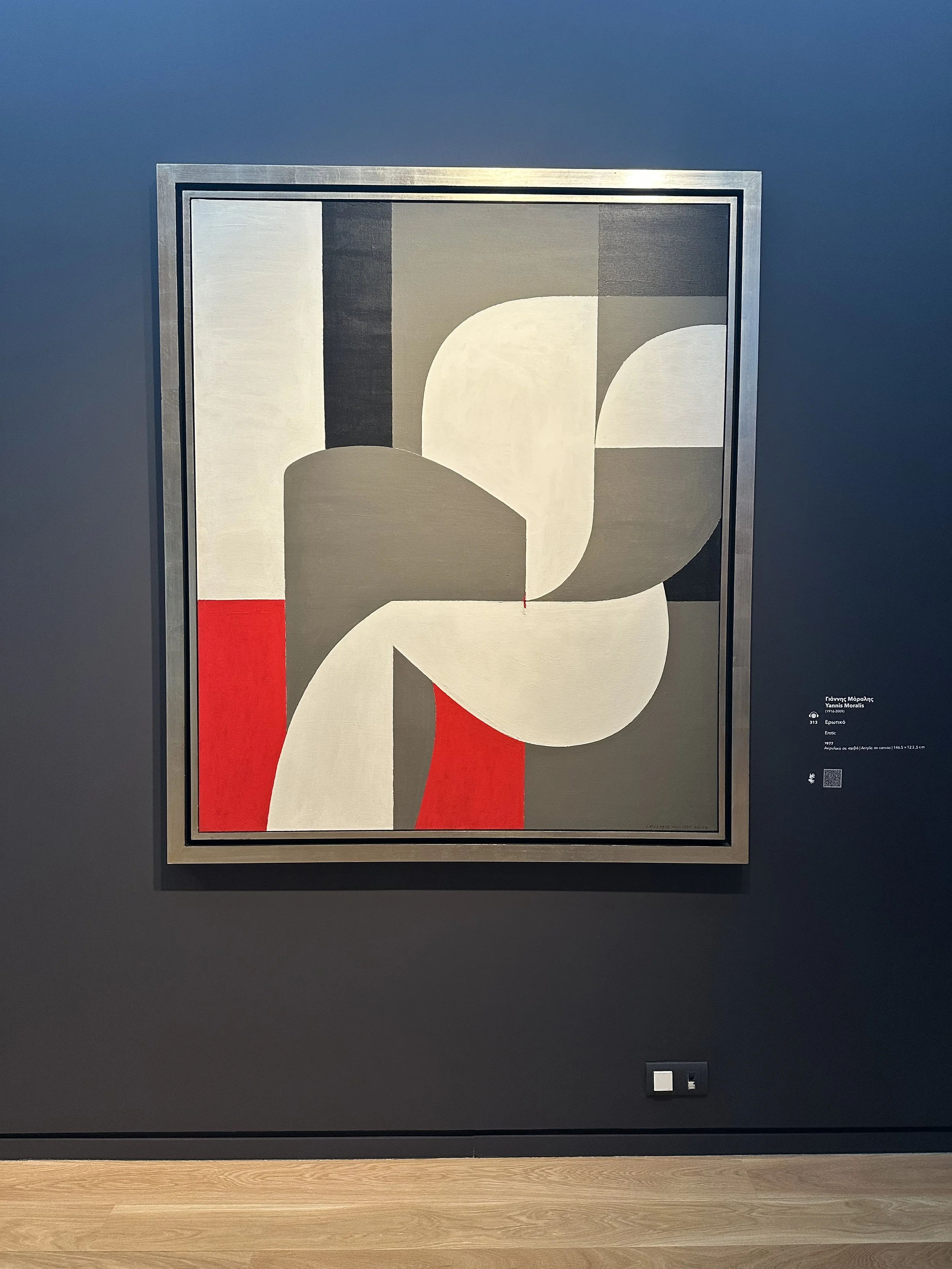

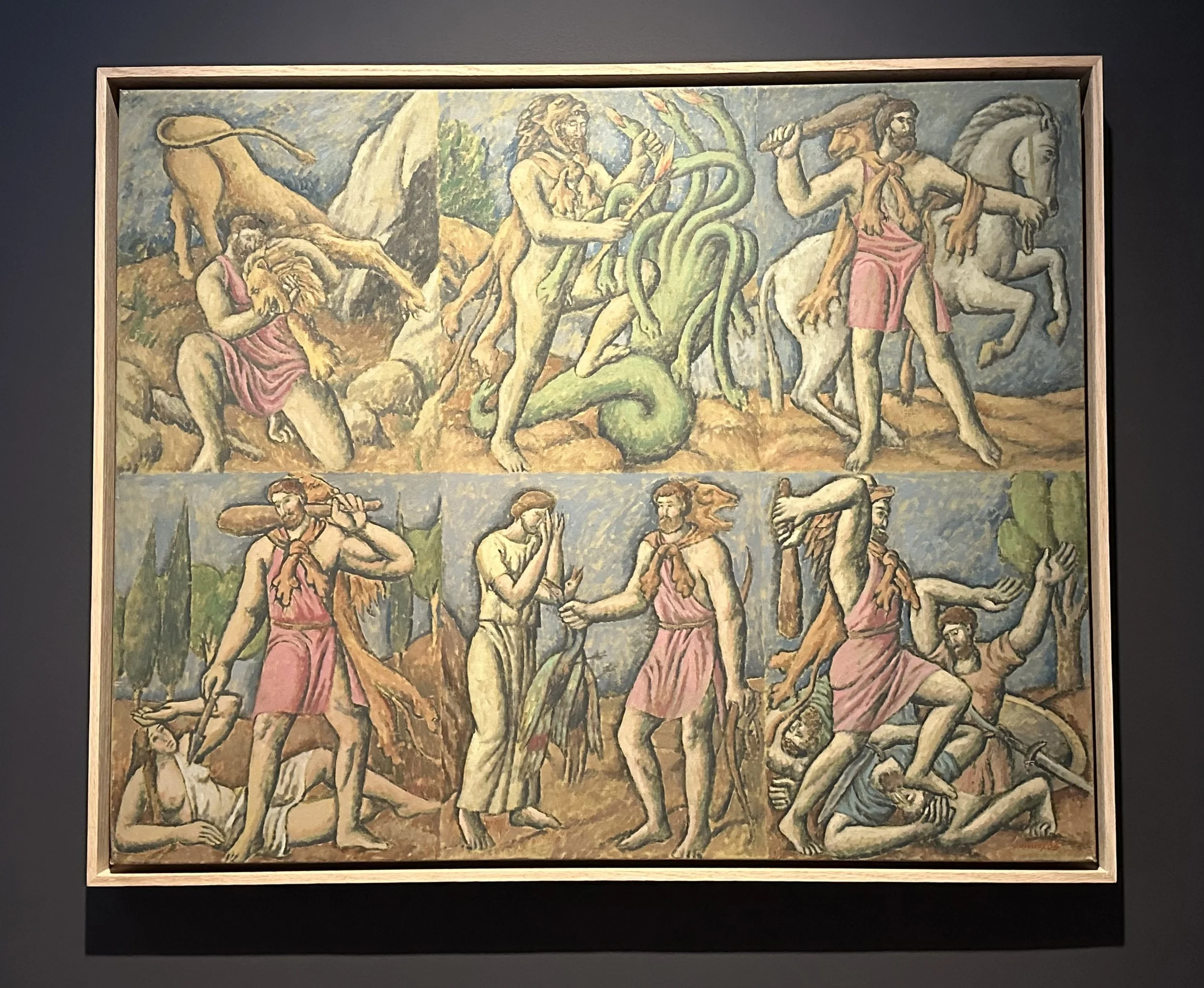
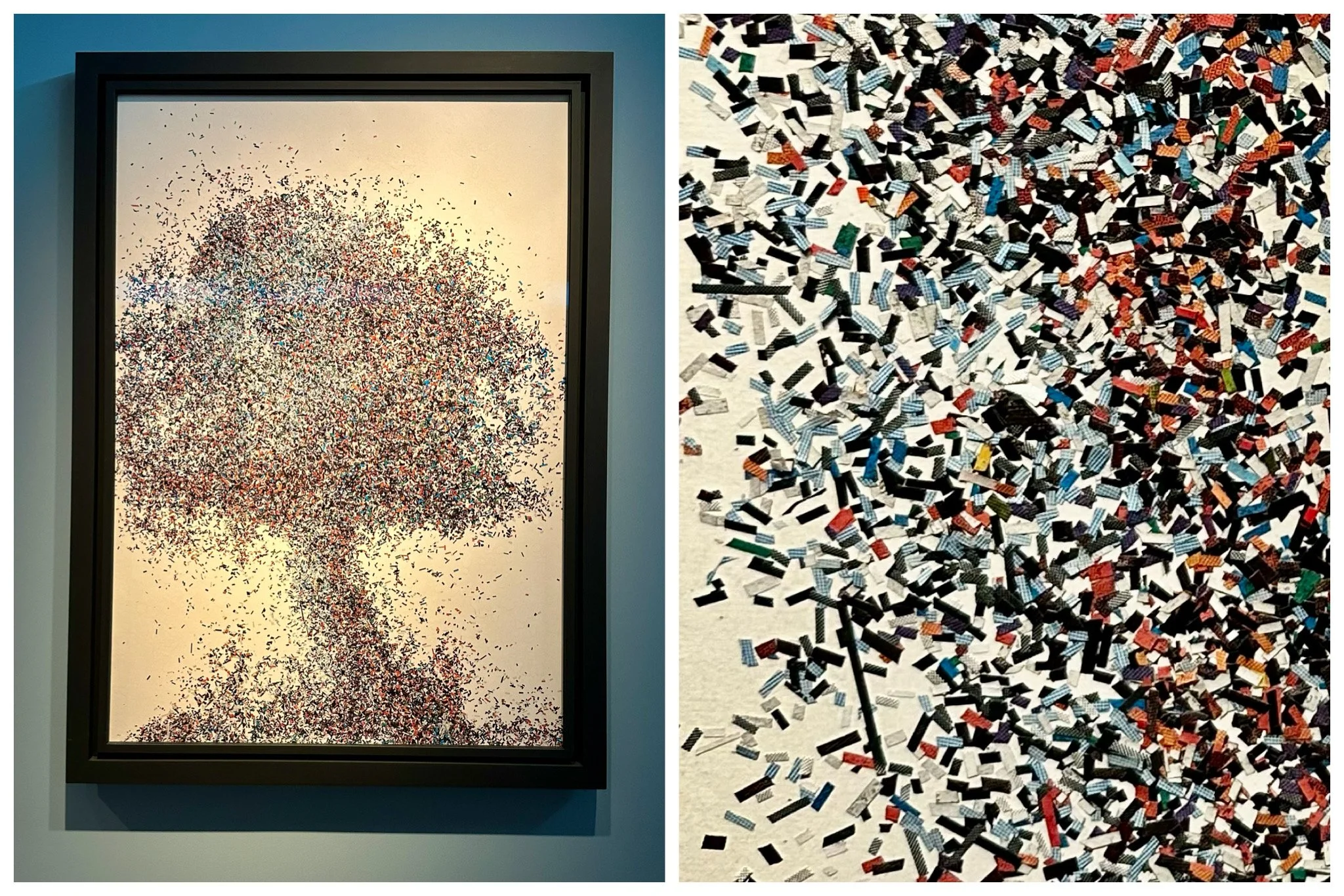
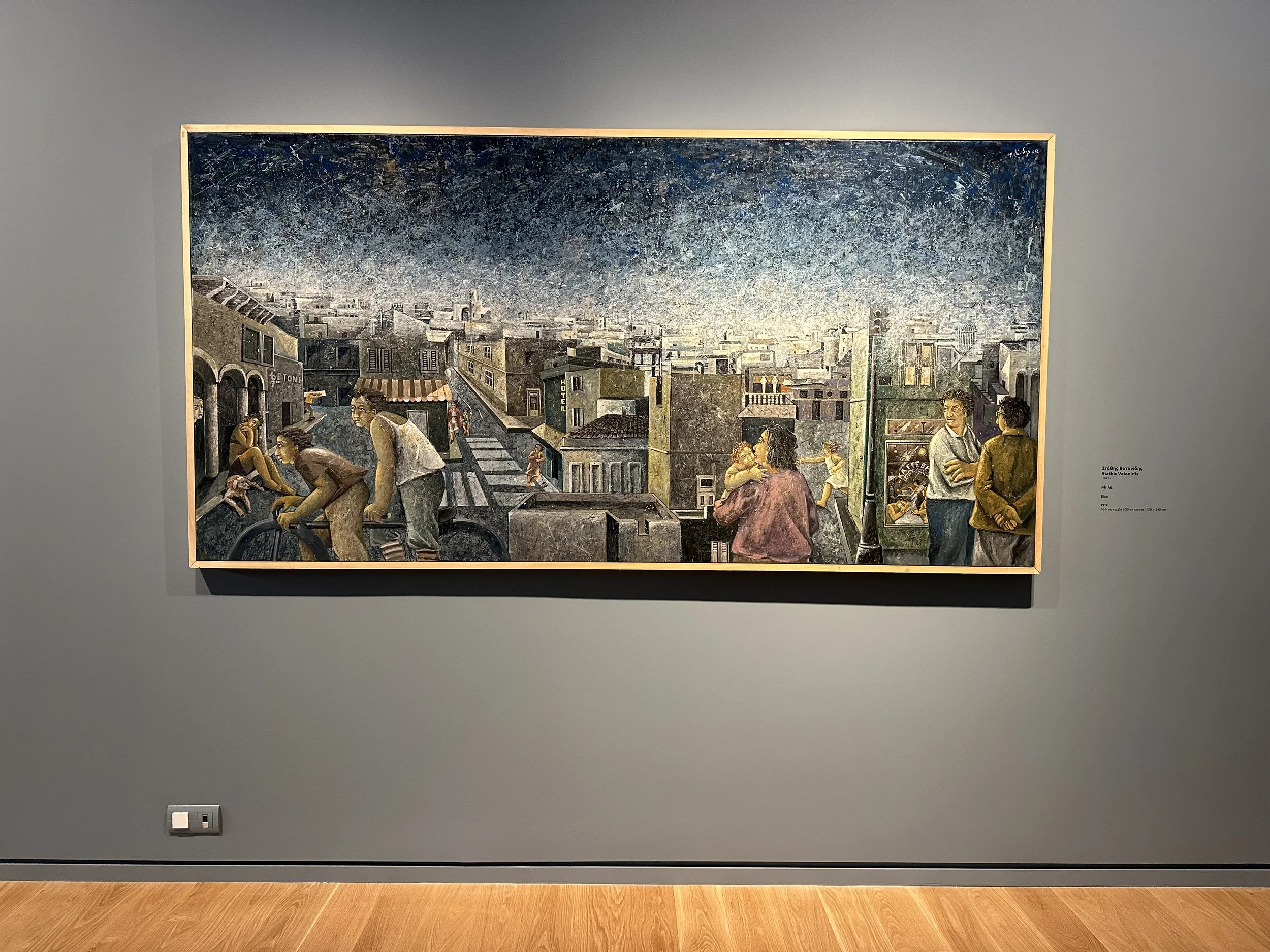
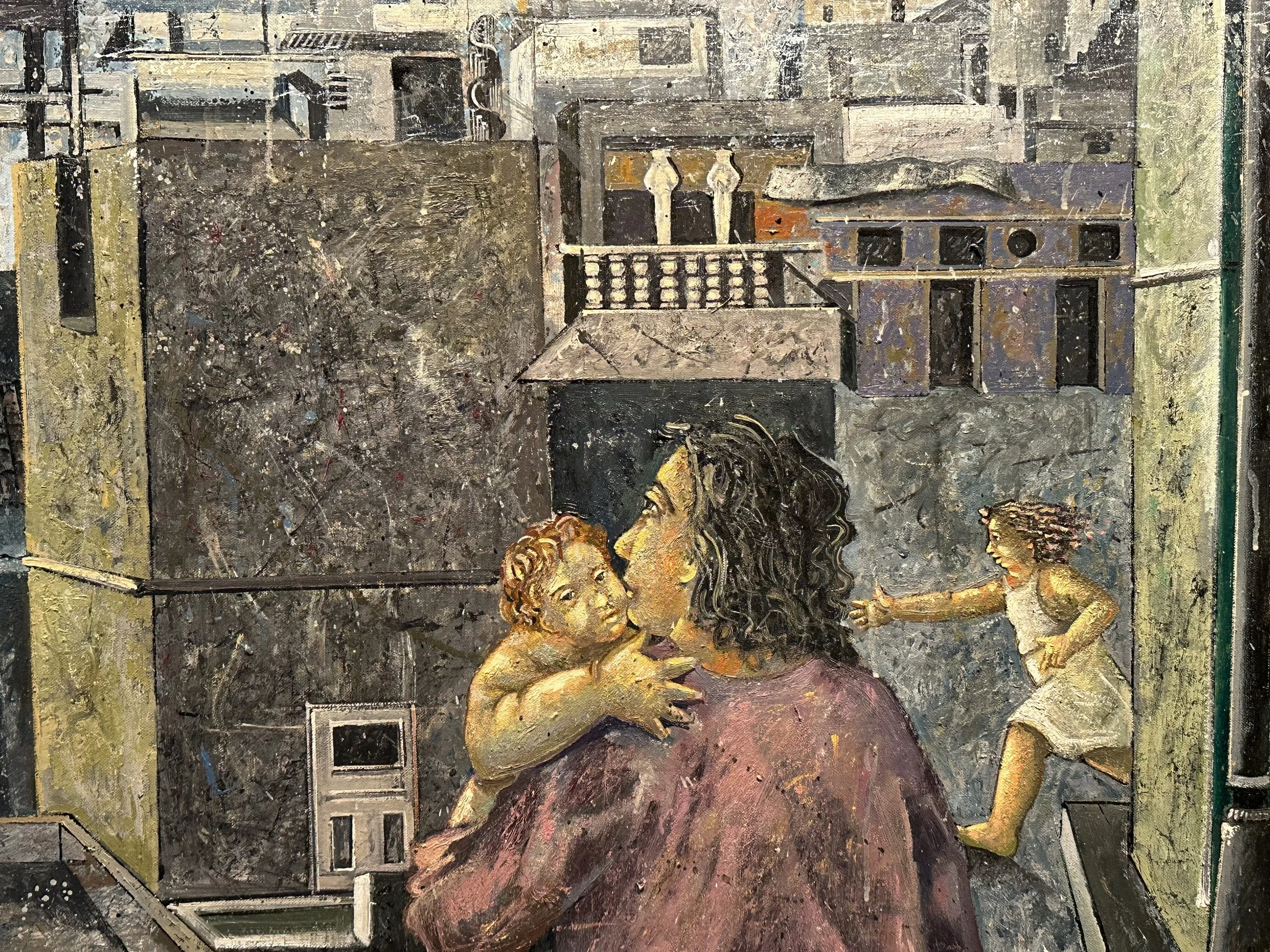
The lower floors of the museum showcased works by non-Greek artists. Though we were already familiar with many of these artists, it was interesting to see lesser known examples of their work. The pieces were shown in non-chronological order, and there wasn’t a pervading theme - a reminder that this was a private collection, the bulk of which is exhibited at the museum in Andros.
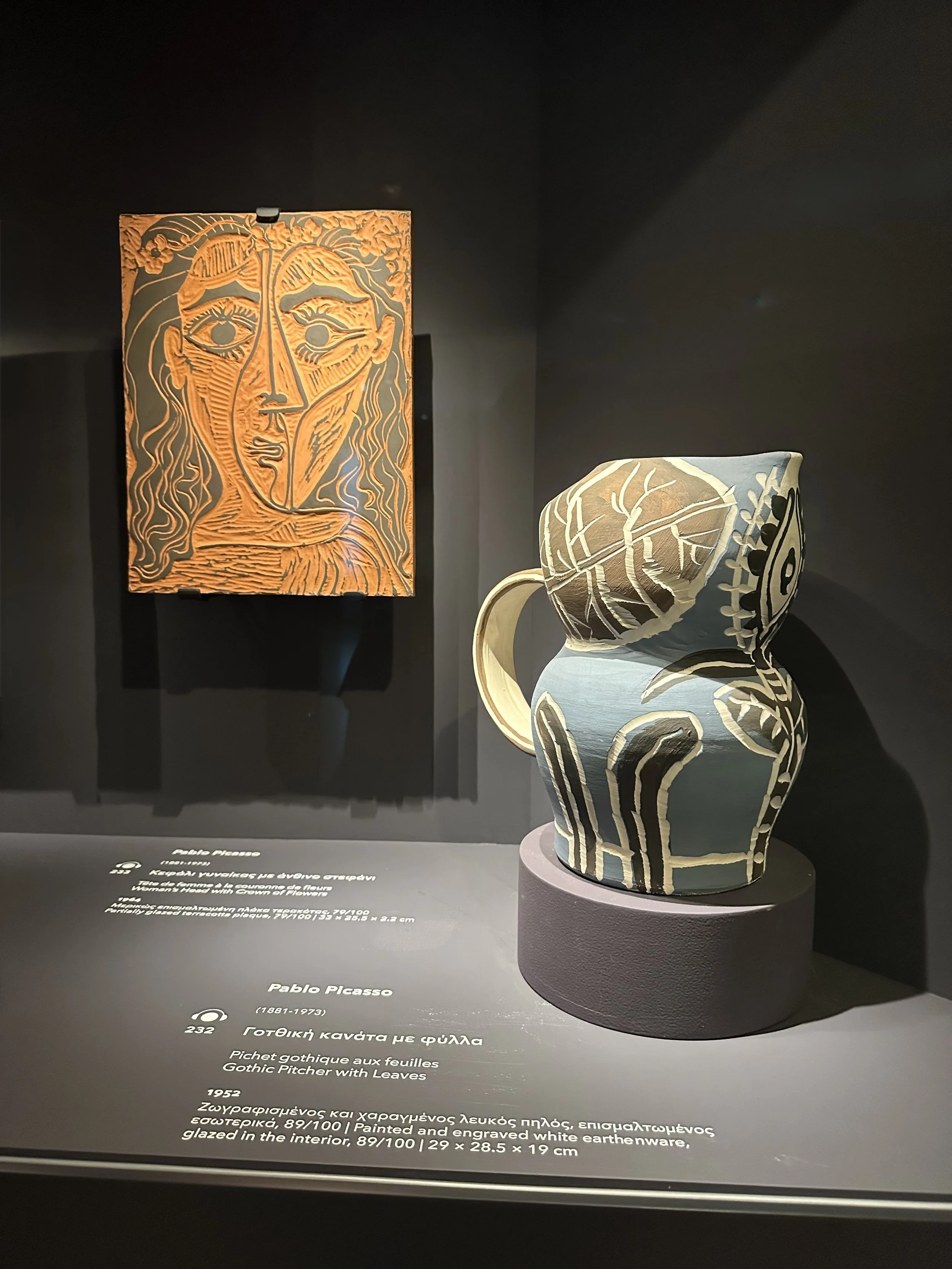

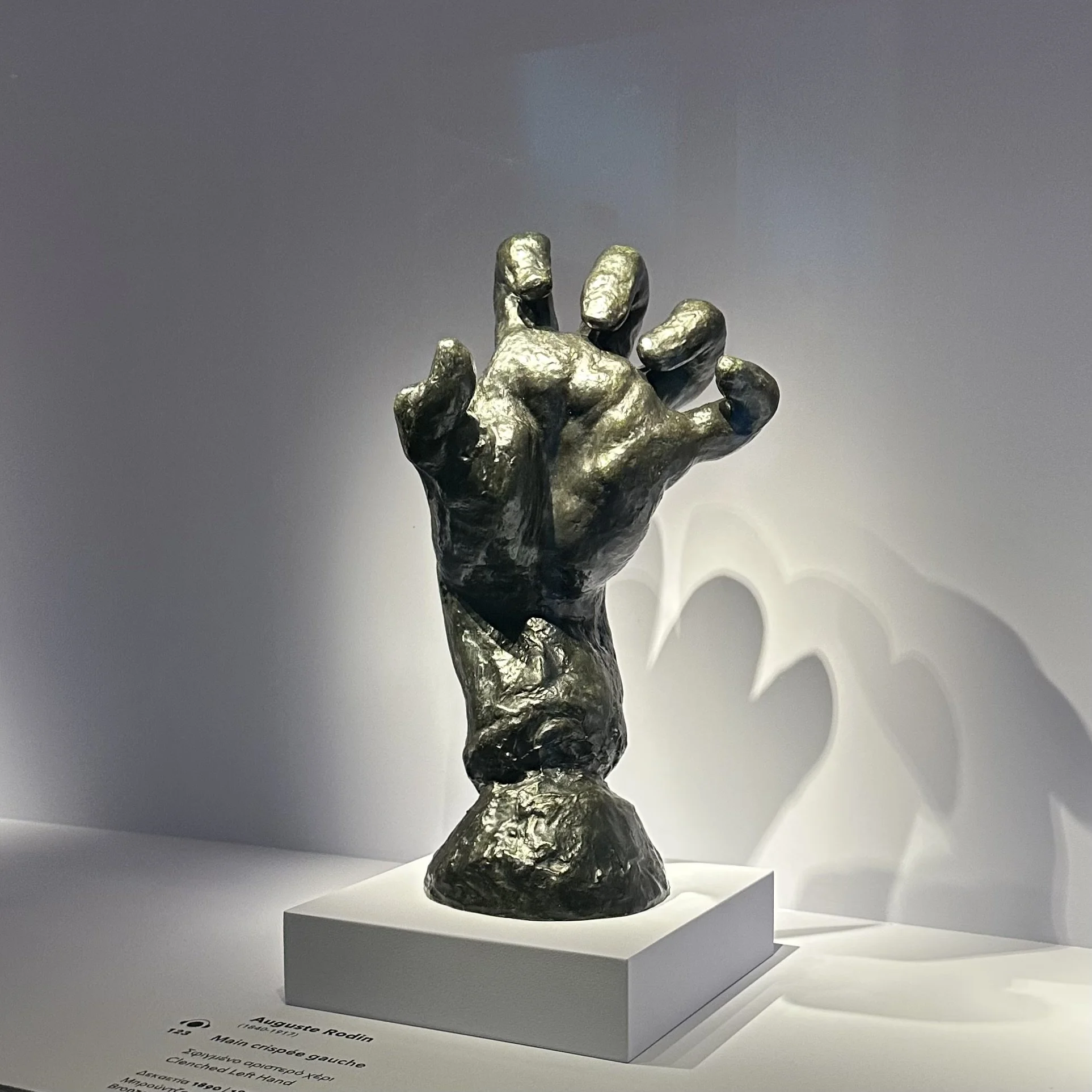
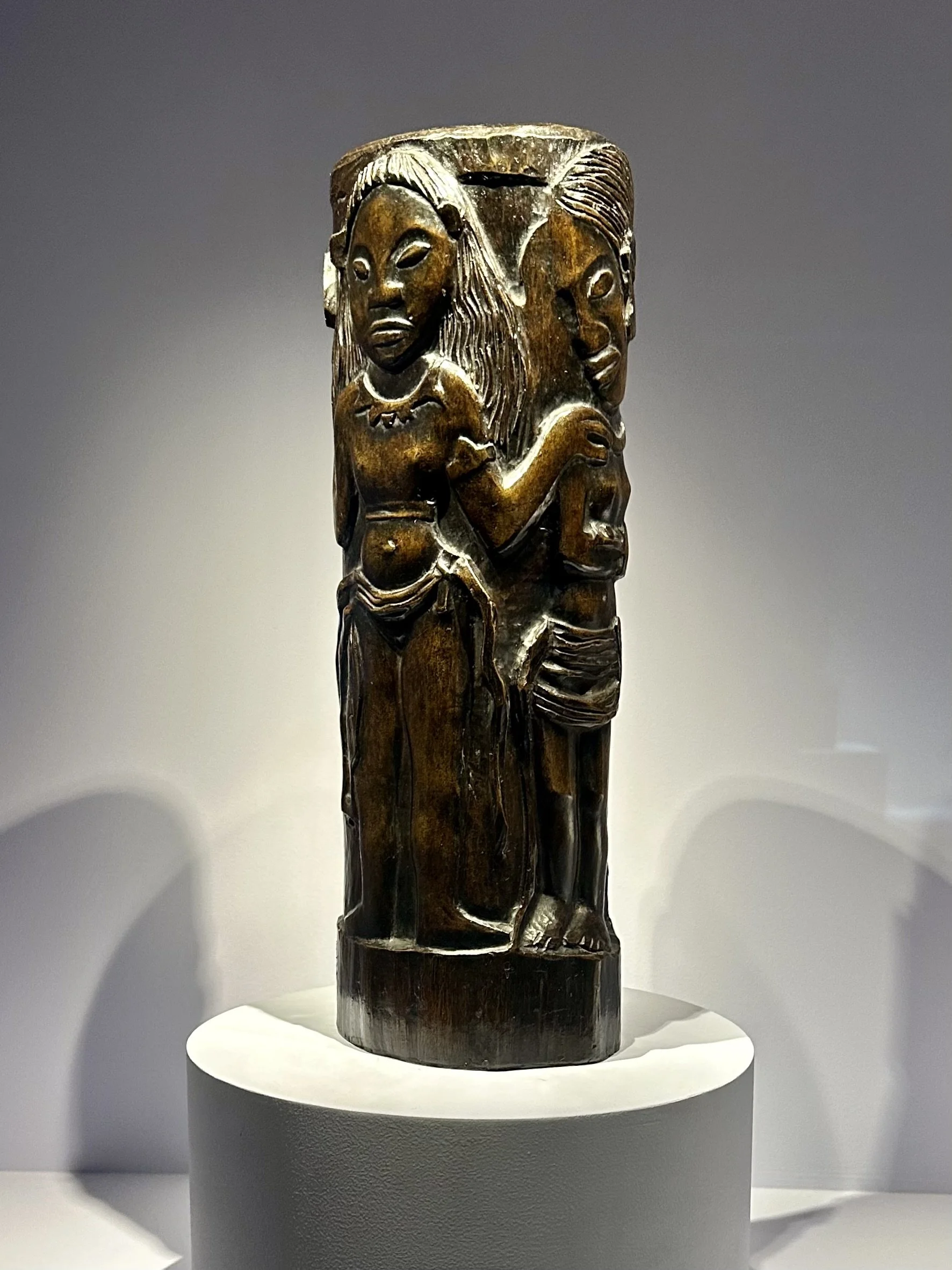

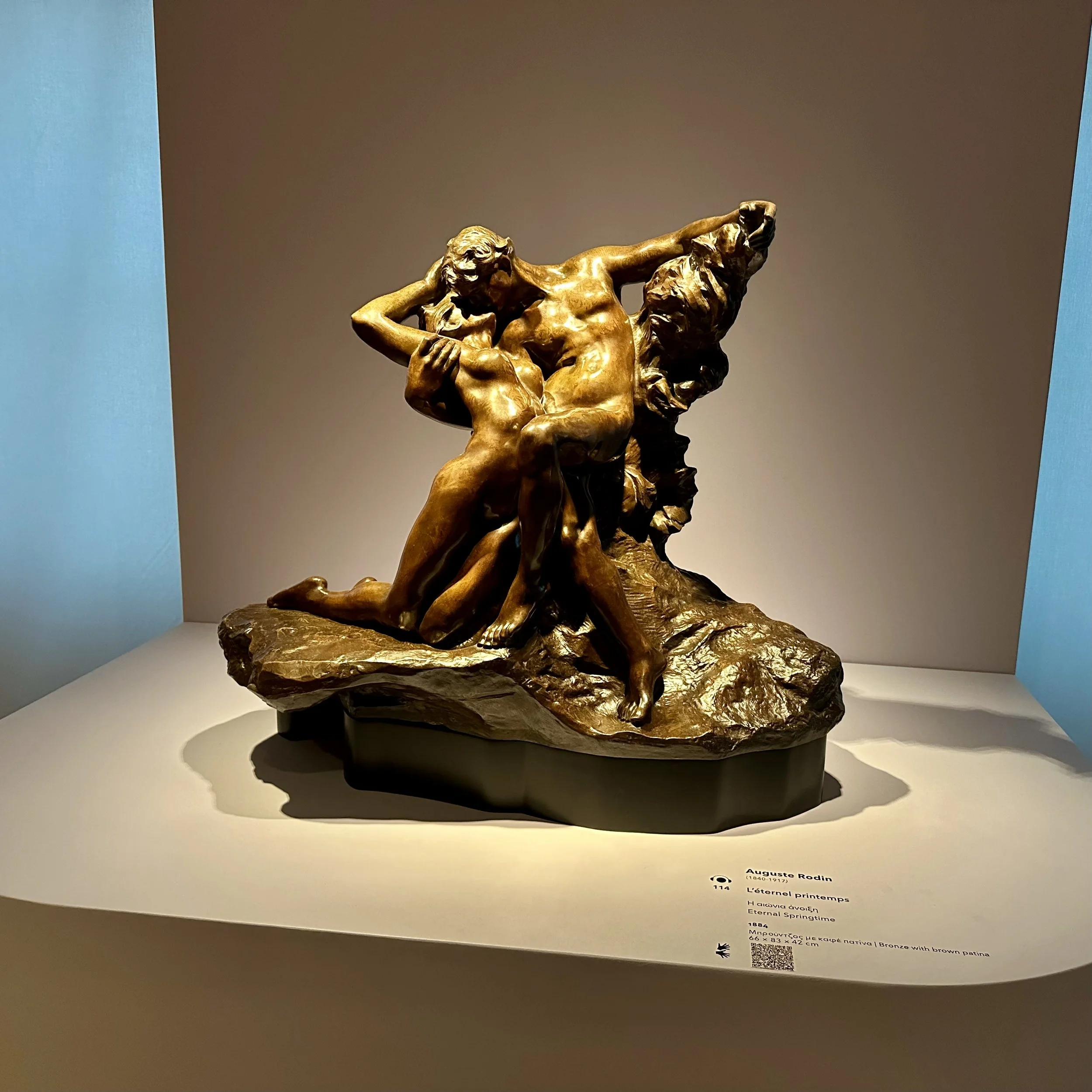
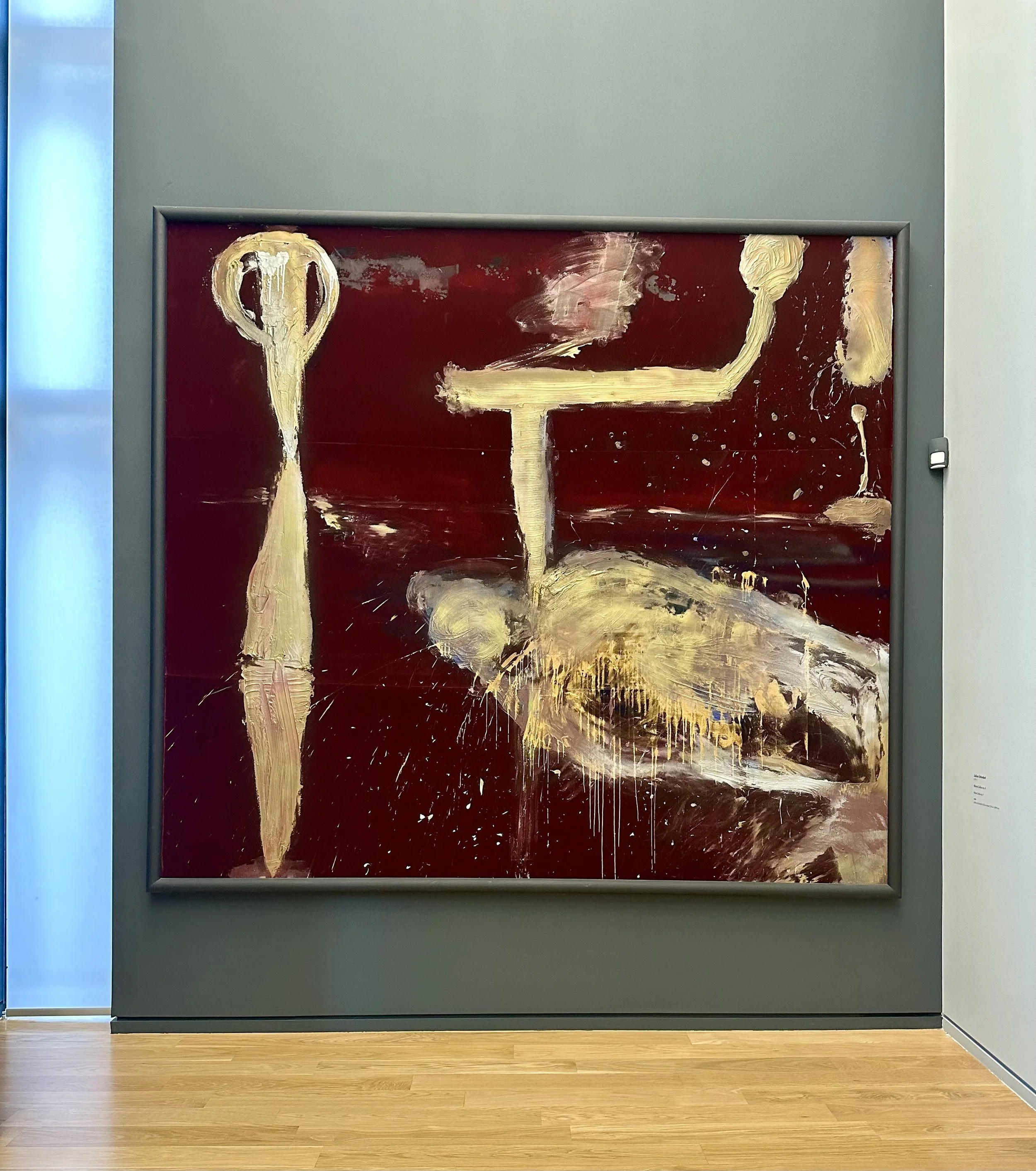
One of my favorite pieces was Degas’ Little Dancer Aged Fourteen. Of the twenty-seven (or so) castings made, this is (reportedly) one of only two with the original fabrics used for the tutu and hair ribbon. I enjoyed seeing it up close and from every angle. I imagined Basil secretly purchasing it as a surprise gift for his wife, and Elise proudly displaying it in their home.


I was intrigued by two pieces - one small, one huge - by artists who were new to me. One was a two-inch gold pendant by César, a French sculptor known for making art from crushed cars and other junkyard scrap. He also reworked old jewelry into new. The other was a monumental bronze by Polish sculptor Igor Mitoraj. The expression was serene but the huge scale was a bit unsettling; it was a post-Modern twist on classical sculpture.


Finally, there was a hauntingly beautiful piece by the Spanish Renaissance master El Greco (Doménikos Theotokópoulos). Painted in the early 1580s, it was both out of place (in a contemporary art museum) and in the right place (as his name indicates, the artist was born in Greece). It is now one of my favorite depictions of Jesus’ face.
